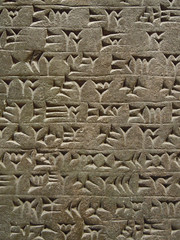AP World History Time Period 1 Flashcards
Terms : Hide Images [1]
| 4779634081 | Origins of man | Africa. |  | 0 |
| 4779634083 | Paleolithic | 2.5 million to - 10,000 years ago (8,000BCE) . Literally means "Old Stone". Although humans also made tools from bone, antlers, and wood. Culture: hunting, gathering (foraging), and nomadism. Perhaps the most remarkable feat was Paleolithic people's ability to migrate and adapt to a wide range of environments. |  | 1 |
| 4779634084 | Hunter- Forager Society | At center of society was the nuclear family which then expanded outward to include ties between related families. These larger groups were called a Kinship group and included between 20-40 people. The Kinship group expanded out further to include a larger group called a clan. Often clans could further group together in time of need to form a tribe. - Trade often further connected these groups too. | 2 | |
| 4779634085 | Patriarchal | Characteristic of a system of society or government controlled by men. | 3 | |
| 4779634090 | Domestication | Taking an animal or plant and adapting it to human use. |  | 4 |
| 4779634092 | Neolithic/Neolithic Revolution | Literally "New Stone". Agriculture is the big game changer! Begins as early as 10,000 years ago (8000 BCE) in the Middle East - with agriculture humans begin moving toward what we call "civilization". |  | 5 |
| 4779634093 | Pastoralism | raising of livestock on natural pastures. (early pastoralist people spread farming technology because of mobility) |  | 6 |
| 4779634094 | Civilization | Agriculture eventually led to societies with settled communities (more urban) . Characteristics: specialization of labor, towns and cities, government, organized religion, technological innovations, including writing. |  | 7 |
| 4779634095 | Code of Hammurabi | Babylonian King laid down the procedure for law courts and regulated property rights and duties of family members, setting harsh punishments for crimes. Standardizing a legal system was one of the features of early river valley civilizations |  | 8 |
| 4779634096 | Cuneiform | Sumerian (Mesopotamian) writing. Perhaps the first writing system. |  | 9 |
| 4779634097 | Ziggurats | Temples to gods in Mesopotamia |  | 10 |
| 4779634099 | Egyptian political + state-organization | Unlike Mesopotamian civilization, Egyptian civilization featured very durable and centralized institutions led by pharaohs who ruled over Egypt's vast Empire. | 11 | |
| 4779634101 | Egyptian writing | hieroglyphics |  | 12 |
| 4779634102 | Olmecs | Olmec civilization prospered in Pre-Classical (Formative) Mesoamerica from c. 1200 BCE to c. 400 BCE and is generally considered the forerunner of all subsequent Mesoamerican cultures such as the Maya and Aztecs. |  | 13 |
| 4779634103 | Chavin | The Chavin civilization flourished between 900 and 200 BCE in the northern and central Andes and was one the earliest pre-Inca cultures. |  | 14 |
| 4779643181 | Mohenjo-Daro and Harappa | Largest cities of the Indus Valley civilization. It was centrally located in the extensive floodplain of the Indus River. Little is known about the political institutions of Indus Valley communities, but the large-scale implies central planning. | 15 | |
| 4779645352 | Hittites | The group of people who toppled the Babylonian empire and were responsible for two technological innovations--the war chariots and refinement of iron metallurgy. | 16 | |
| 4779649658 | Shang Dynasty | Chinese dynasty (about 1750-1122 B.C.) which was mostly a farming society ruled by an aristocracy mostly concerned with war. They're best remembered for their art of bronze casting. | 17 |
